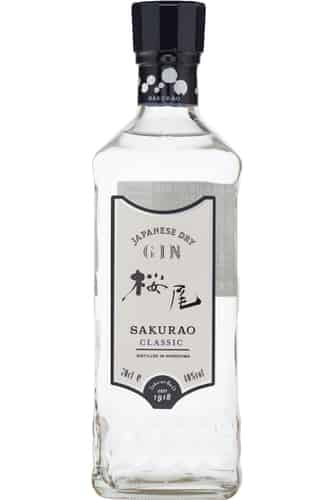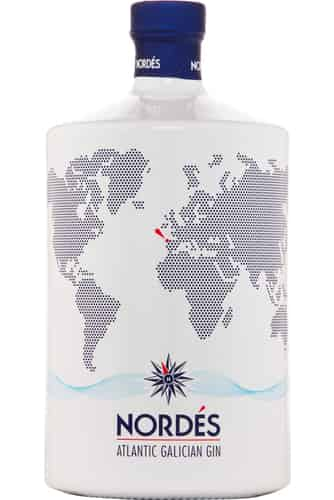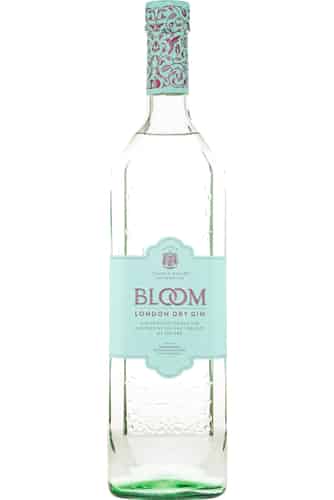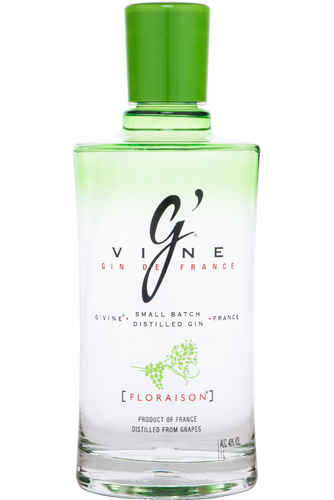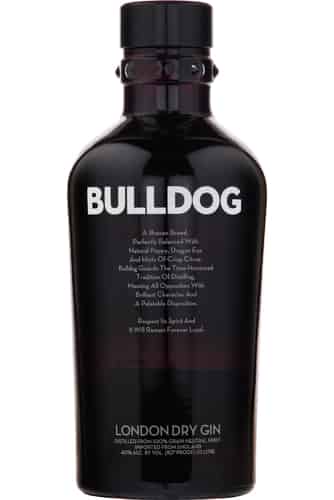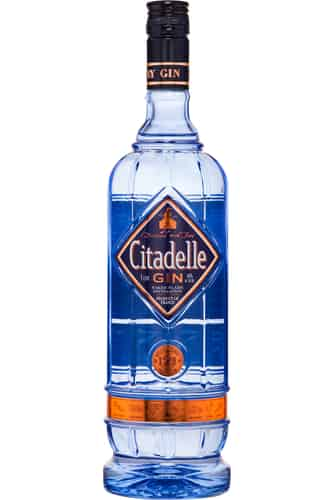Gin
- Save
8.00 €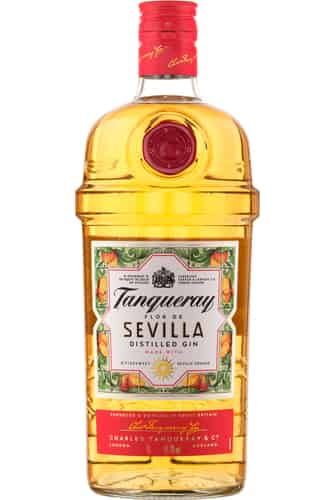
Tanqueray Flor de Sevilla (1 Liter)
100 cl, 41.3%In stock28.80 €36.80 € - Save
0.80 €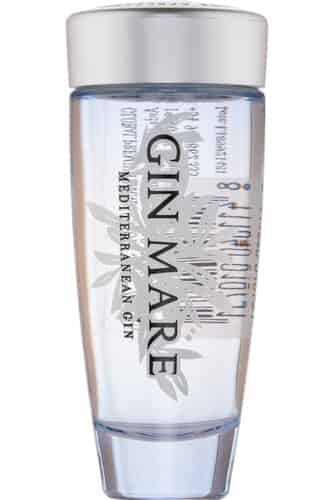
Gin Mare Miniature
5 cl, 42.7%In stock4.80 €5.60 € - Save
8.00 €![]()
Sakurao Japanese Dry Gin (40%)
70 cl, 40%In stock32.00 €40.00 € - Save
8.00 €![]()
Nordés Atlantic Galician Gin (1 Liter)
100 cl, 40%Out of stock33.60 €41.60 € - Save
8.00 €![]()
Bloom Gin (1 Liter)
100 cl, 40%Out of stock27.20 €35.20 € - Save
6.40 €![]()
G'Vine Floraison Dry Gin (1 Liter)
100 cl, 40%Out of stock43.20 €49.60 € - Save
3.20 €![]()
Bulldog Gin (1 Liter)
100 cl, 40%Out of stock28.00 €31.20 € - Save
6.40 €![]()
Citadelle Gin (1 Liter)
100 cl, 44%Out of stock28.80 €35.20 €
Sorry, we didn't find anything. Please try changing your search criteria.
History
Undoubtedly one of the world’s finest spirits, gin, and its historic ancestor Jenever, has a long and varied history. At times it has been considered the drink of kings, the liquid of the devil and a high artisan spirit. At the heart of gin’s story lies the juniper berry, a uniquely aromatic, bittersweet botanical used to flavour all gins. In practice, dozens of botanicals are often used to give gin the herbaceous and citrusy flavours typical of this delicious and delicate spirit.
There are several varieties of gin, with the most prominent being London Dry, Plymouth and Old Tom. London Dry is a protected term, and gin that carries this name must be distilled with the botanicals included, as opposed to merely flavourings added after the event (known as Compounded gin, where flavour adding ingredients are macerated after distillation- these can be wonderful gins too!) It also most be distilled to no less than 70% ABV, and must not contain any added sugar greater than 0.1 grams per litre. The same applies for colourings or any other product other than water. London Dry’s name is revealing of the spirit’s association with the English capital, long a distilling centre for gin, and the drink’s spiritual home (though London Dry Gin can be made legally anywhere in the world). Old Tom is a sweeter gin, sometimes called the "missing link" between dry modern gins and sweeter Jenever. It was very popular during the 19th century, it was called for in many classic cocktails, and for this reason as the cocktail revival has continued, so has the popularity of Old Tom gins risen with more distilleries producing an Old Tom style. Plymouth gin is a protected term of origin, meaning only distilleries inside Plymouth can make this style. At the moment there is one distillery in Plymouth, Black Friars Distillery. Plymouth gin has an earthier, less dry flavour, due to the high percentage of roots used in the botanical mix. Again, due to its unique quality of this style of gin, it is often used in cocktails.
Gins that emphasis a certain flavour are also a common style, with some being particularly citrus forward, or others offering more floral or vegetal palate. A classic old fashioned English flavoured gin is Sloe Gin, which uses sloe berries to add a rich, jammy bittersweet fruit flavour and a wonderful deep purple hue. Recently, a new style of gin has been touted: American Dry. This is a style that has sprung up in response to the explosion of small scale and craft distilleries in the United States. American Dry is reminiscent of London Dry, though it places less emphasis on Juniper berries for flavour, and therefore has a softer palate, with rounder flavours compared to London Dry’s precise sharp notes.
Gin has often been the subject of unfortunate and unfair bad press, from Hogarth’s 1751 drawing "Gin Lane" (which depicts scenes of debauchery, disease and death) to the spirit’s long held nickname of "Mother’s Ruin", which suggests that the drink was responsible for the downfall of the family. This was largely the result of propaganda by other alcohol producers, such as the wine and beer industries, though there was a lot of dangerous and poorly made spirit around in the 18th century. The stigma, however, continues to this day, not helped by the perpetuating of myths such as "gin make you weep"- something which has been proven not to be true. Despite this gin has a noble history, and is found in more classic cocktails than any other spirit, featuring in some of the most famous drinks of all: the Gin and Tonic, the Martini, and the Gimlet, to name but three. In the 21st century, there has never been a better time to be a gin drinker. It seems as if a new top quality distillery opens every week, and there is more choice and variety than there has ever been. Every town seems to have a local gin distillery, and it is now the ultimate terroir spirit, often featuring locally picked botanicals, unique to that area. At FineDrams we have selected the very best bottlings that the spirit has to offer, with gin of all varieties and from across the globe, from Holland, to England, to America, to Germany, there is something for every gin drinker in our selection.
Timeline
As with other spirits, the history of Gin starts with the early history of the practice of distilling. Juniper has been used in medicine and home remedies since the dawn of history.
-
2000 BC
Some evidence that distillation was practiced by Babylonians.
-
100 AD
Distillation of chemicals performed by ancient Greeks.
-
900
Distillation of chemicals in the Middle East.
-
1200
Medical distillation of wines in Italy occurs in monasteries.
-
c. 1269
First recorded reference to a juniper based drink is found in the Dutch text Der Naturen Bloeme written by famous Middle Dutch scholar and poet Jacob van Maerlant.
-
1300s
Distilling sweeps Europe, with Aqua Vitae being produced across the continent, particularly in monasteries.
-
1349
Plague strikes the distilling region of the low countries, and juniper berries, both crushed as powder, and as a drink, is widely believed to be the cure.
-
1500s
Another Dutch publication, Een Constelijck Distileerboec, prints the first recorded recipe for Jenever.
-
1560s
The Dutch, who had repeatedly proved themselves as early masters of distilling, produce a juniper flavoured spirit, with evidence found in Belgium and France of something similar too.
-
1572
During this period, the English and Dutch were at war together against the Spanish, and as troops moved between the two countries, Englishmen encountered Jenever for the first time. They also saw Dutch soldiers drinking the spirit before heading into battle to steel themselves, leading to the term "Dutch Courage" which is used to this day.
-
1575
Bols Genever Distillery is founded in Amsterdam, the oldest surviving distillery and one of the first producers of juniper spirits.
-
1585
After the Spanish conquered Antwerp, there were many thousands of refugees fleeing the Netherlands, some of which ending up in England, bringing their distilling techniques and love of Jenever with them.
-
1600s
Jenevers become more widespread, with noted Professor Slyvius de Bouve creating a spirit flavoured with juniper and distilled from malt wine (though he was not the first to do so).
-
1618-1648
Jenever is given to soldiers in the Thirty Years War as a means of warming them against the cold in the trenches.
-
1623
Philip Massinger’s play, The Duke of Milan contains a reference to Jenever.
-
1640
Distilling is recorded to have occurred in the then Dutch colony of Manhattan.
-
1689
Following the "Glorious Revolution" William of Orange, a Dutchman, takes the English, Irish and Scottish throne, ruling with his wife Mary. William prohibits imports of Spanish and French spirits and wine, leading to a huge upsurge in the production and drinking of gin and Jenever. In 1690 the monopoly of the London Guild of Distillers was broken, allowing a free market for spirit producers.
Yet this gin was not always of a good quality, and as the crown allowed unlicensed distilling, many spirits were not sold with juniper as the flavouring but with the poisonous turpentine.
-
1700s
The first half of the 18th century marked the infamous "Gin Craze"- a period where alcohol abuse, poisoning and addiction were rife. No less than five acts of parliament were passed between 1729 and 1751 to try to stem the consumption of gin, particularly in London. Gin was extremely economic as well, as the spirit made use of excess or inedible grain, whilst price of food dropped, meaning that the public had more money to spend on drink. Gin was particularly popular amongst the lower classes, but all levels of society drank it, including members of parliament and the royal family. There were over 7,000 "dram shops" in London alone, offering gin at low prices. During this time the death rate outstripped the birth rate in London, which was rapidly growing before. Gin shops often used the sales phrase "drunk for a penny, dead drunk for twopence, clean straw for free", the "clean straw" referenced a room kept full of straw in the back of coffee houses and gin shops for patrons to pass out drunk in. So deep and long were drinker’s stupors, that being buried alive was a very real fear, leading to the creation of "safety coffins", which had bells attached a line to the inside of the coffin, ensuring that anyone buried whilst passed out drunk could attract the attention of the cemetery nightwatchmen.
During this century, as European imperialism grew with the discovery of the new world, gin became a vital trading good, and was often infused with citrus and herbs in a bid to see off scurvy during the long journeys at sea.
As for production, gin at this time was produced in pot stills, leading to a thicker, more sweet gin than we are used to today.
-
1730
10 million gallons of gin were being distilled in London alone.
-
1734
Judith Dufour, in a story that would cause scandal, collected her two year old son from the workhouse, killed him, disposed of the body and sold his clothes to buy gin.
-
1736
In an attempt to curtail these bad drinking practices, the Gin Act of 1736 imposed heavy taxes on retailers selling the spirit, which provoked riots in the streets. It required licensees to pay a £50 fee annually, worth about £7000 in today’s money. Only two licenses were purchased. After a brief fall in consumption, it began to rise again, despite being illegal, (the the gin quality was extremely poor during these years of prohibition, and led to illness and poisonings) and an act in 1743 repealed the 1736 law. The illegal gin gloried under mysterious names such as ‘Blue’, ‘Strip Me Naked’, ‘Lady of Geneva’, ‘Cuckold’s Comfort’, ‘Lady’s Delight’ and most famously ‘Mother’s Ruin’. Some contained Sulphuric acid amongst other noxious ingredients. Spirit at this time was often over 80% ABV. Under the original Gin Act, informers were paid £5 (then a very large sum) to reveal the location of shops and distillers to constables. They were often attacked and threatened.
-
1739
London sees its harshest winter for many decades, with the Thames freezing over. With trade all but halted in the capital, many turned to gin as a means of gaining income, and indeed, keeping warm!
-
1740
Felix Booth records his recipe, which continues to be used by the Booth’s gin company to this day.
-
1743
The Bishop of Sodor and Mann, Thomas Wilson, lead a campaign for a more effective legislation on gin drinking, as the average person drank over 10 litres of gin a year, whilst the average Londoner drank over 5 times that number.
-
1751
Another Gin Act began to turn the tide on gin consumption, this act lowered the cost of licenses, but required those who held them to be operating from a property which cost at least £10 a year in rent. This pushed gin "upmarket". Yet historians have said that the end of the Gin Craze was more due to a series of bad harvests that forced up the price of grain. As the population began to grow again, food prices increased, and demand for gin lessened. Nevertheless, there were 29,000 licensed gin sellers in England.
At this time, Hogarth etched the famous "Gin Lane", which showed a scene of debauchery and disturbing scenes. Corpses litter the lane, men are hung till dead, children impaled, and the drinkers riot in the street. The gin-seller is aptly named: Kilman. The most striking feature however, is the mother, covered in sores, clothes torn, who drops her baby down the stairs whilst taking a pinch of snuff. Less known however, is the fact that Hogarth was in the pay of London’s breweries to produce anti-gin propaganda. Indeed, the etching had a twin drawing- "Beer Street", which depicts a scene of jolly drinking, with men hard at work, painters producing art and gentle courtship occurring. It must be noted that with much of the water unfit to drink at the time, beer drinking was genuinely beneficial for one’s health.
-
1755
A rudimentary vending machine was set up to sell gin by Dudley Bradstreet, who purchased a cat statue and placed it outside his shop, fixing a pipe to its claw, which lead to a funnel inside his shop. He named it the "Puss and Mew Shop", and patrons passing could knock the door and whisper "Puss, give me two pennyworth of gin", if the reply "Mew" came, they would place coins in the cat’s mouth, and whilst gin would be poured through the pipe in the paw.
-
1769
Probably the most famous gin in the world, Gordon’s Dry gin was first produced in 1769 in London by Alexander Gordon.
-
1793
Black Friars distillery, producer of Plymouth gin, is founded.
-
1794
Cork Dry Gin was first distilled in 1793 in the southern Irish city of Cork, becoming one of the earliest gins produced in Ireland.
-
1800s
This century would see the rehabilitation of gin as a spirit, and industrial techniques start to be used in its production. The 1800s would also see the most important moment for the consumption of gin- the invention of the Gin and Tonic. This classic highball was first created by the East India Company in India. British officers were persistently affected by malaria, and it was discovered that quinine could be used to treat the disease, and even prevent it. As such, it was stipulated that officers and troops in India take a ration of quinine. The bitter taste of the medicine, however, was off-putting and the men took to mixing it with lime juice, sugar, water and gin- inventing the Gin and Tonic!
-
1806
The first definition of a cocktail appears in the Balance and Columbian Repositor in New York: "Cock-tail is a stimulating liquor, composed of spirits of any kind, sugar, water, and bitters". The invention of the cocktail would prove to be a key moment for gin’s history.
-
1820s
"Gin palaces" begin to emerge, these were upmarket drinking houses that were lavishly laid out with mirrors and gas lights (these days one can see the influence of the gin palace in some of London’s older pubs). They were a far cry from the "dram shops" of the Gin Craze, which were more like chemist’s stores, and where the drink was taken standing up. Gin palaces first introduced the "bar": modelled on a shop’s counter, this was ideal for the attachment of beer pubs and the swift service of drinks.
The invention of the column still in this decade would revolutionise gin manufacturing, and allowed for far more practical distilling of grain spirit used to make gin. It was this new still style that would spark the creation of London Dry gin as we know it, as it enabled a much purer spirit to be created, and allowed for economical continuous distillation. As a less harsh and more precise spirit could be created, distillers began to use far less sugar in their process (previously used to cover the flaws of their poor product), meaning that the spirit became "Dry".
During the 1820s, a sweeter style of gin called "Old Tom" became very popular. Rumour has it that the name came after an old tom cat fell into a gin making still, giving it a distinctive flavour. Yet, in reality, early gin pioneer Thomas Chamberlain is the most likely inventor of the spirit, and probably the source of the name too.
-
1820
The Chelsea Distillery, a forerunner of the Beefeater distillery, is founded and run by the Taylor family.
-
1830
Tanqueray is founded in Bloomsbury, London by Charles Tanqueray.
-
1831
The Coffey still is patented.
-
1835
James Burrough, father of Beefeater gin, is born in Devon and grows up to be a chemist, travelling to Canada.
-
1840
Gin consumption finally returns to level seen at the end of the spirit’s prohibition in 1743.
-
1845
Boodles gin is founded.
-
1850
Gin cocktails begin to emerge.
-
1858
Tonic water containing quinine is sold commercially for the first time.
-
1862
Beefeater Gin is founded in London.
Jerry Thomas publishes his Bartenders Guide: How to Mix Drinks, which includes a great number of gin cocktails.
-
1863
Phylloxera blights French wine and cognac production, meaning that the higher classes of society look elsewhere for their drinks, turning to gin and whisky particularly.
-
1870
Fleischmann Extra Dry Gin is distilled for the first time, becoming the first gin to be made in America.
Schweppes releases their first bottled tonic water for retail.
-
1874
Gabriel Boudier begins to distil gin in France.
-
1920-1933
Prohibition in America badly hurts the gin industry, both in the United States and overseas. A dangerous homebrew of gin begins to be produced- nicknamed "bathtub gin" from the vessel it was made and stored in, this was bootlegged and often of a low quality. Many classic cocktails (now termed "prohibition era") were created during this period, including the timeless Martini, perhaps the finest gin cocktail of them all.
-
1930
The Savoy Cocktail Book is published, with gin featuring in more recipes than any other spirit.
-
1934
With the end of prohibition, Gordon’s opens a distillery in America.
Over the post-prohibition era, more gin distilleries and brands are founded to capitalise on gin’s resurgent popularity.
-
1959
Bombay Original Dry is launched, based on a recipe from 1761.
-
1972
Cadenhead’s, best known for their independent whisky bottlings, launches Old Raj gin.
-
1982
Gin and spirits distillery St. George is founded.
-
1987
Bombay Sapphire is founded, the successor to Bombay Original Dry.
-
1990s
The 1990s mark the beginning of the cocktail revival in America and Europe, with an upturn in gin sales and distillery openings. This was just a taste of what was to come in the 21st century.
-
1994
French gin distillery Citadelle opens.
-
1996
Junipero is founded in America.
-
1998
Plymouth Gin relaunches under new ownership.
-
1999
Dutch Van Gogh gin is launched.
-
2000s
The 21st century sees an explosion in gin-distilling, with the launch of dozens of microdistilleries and new brands hoping to find success in a new world of astute drinkers and cocktail fans. Much of the credit can go to Hendrick’s gin, launched in 1999, which presented gin in a craft style, and established it as a premium product in the eye of the consumer.
American distilling particularly took off, with brands like, St. George, Aviation, Few, No. 209, Koval (to name but a few distilleries!) all launching new gins. In Europe, new gin distilleries were founded in Holland, France, Spain and Finland. In the UK, and London in particularly, microdistilling arrived, with brands like Sipsmith and Sacred emerging to produce some truly excellent gin. Indeed, around the world, it seems like more and more people are distilling locally sourced, small scale gins, with an emphasis on artisan quality. Truly, gin has risen meteorically from drink of the slums to an expertly crafted, delicious spirit which often emphasises terroir and is a source of local pride! There has never been a better time to be a gin fan.


